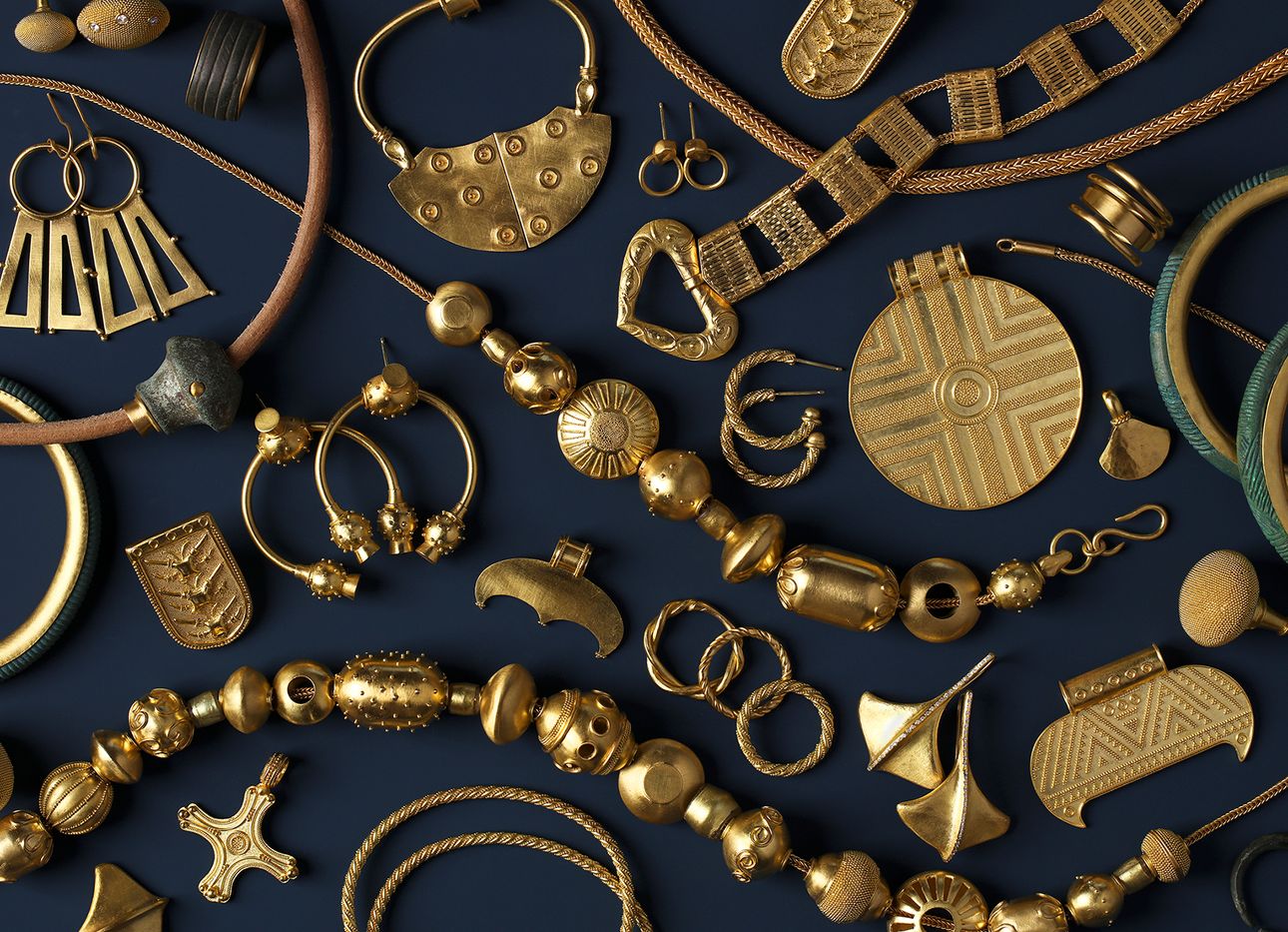
Two Millennial Jewelers Practicing the Ancient Art of Goldsmithing
The archeologist-turned-goldsmith Loren Teetelli spent more than 100 hours hand-forging a single 22-karat gold cuff for her new Viking Trove collection to create distinctive, textured finishes that evoke an ancient treasure, much like the kinds of artifacts she studied years earlier, while interning as an objects conservator at the American Museum of Natural History. Teetelli is among a handful of young jewelers who are using centuries-old goldsmith techniques—such as sawing, soldering, engraving, and embossing precious metals and gemstones—to craft contemporary pieces with a soulfulness and rich detailing that couldn’t be achieved with casting, the common method of jewelry-making today. “There’s something beautiful and special about a piece when you can see marks left by the hand of its maker,” says the 30-year-old designer, who established her Los Angeles brand, Loren Nicole, in 2016.
Jean Prounis is another millennial who’s mastered the time-honored craft of goldsmithing. The New York–based designer begins her process by melting gold metal scraps, then blends them with small amounts of copper and silver to achieve a warm, sun-kissed 22-karat gold alloy that’s malleable enough to twist, hammer, and granulate, a procedure that involves attaching tiny spheres in areas of a piece to achieve a textured pattern. “Creating jewelry in [this material] is a way to continue telling the stories of jewelry that was made centuries earlier,” Prounis says. Her work references ancient Greco-Roman and Egyptian civilizations while instilling a sense of modernity with its larger-scale forms, such as her classical boat-shaped hoop earrings and supple, hand-woven chains.
Because goldsmithing requires time and patience, its practitioners produce a limited output. Teetelli and Prounis prefer it that way. “My clients truly connect with the stories and techniques behind each one-of-a-kind piece,” Teetelli says. The antithesis of today’s high-tech 3-D manufacturing, the craft is a tactile reminder that some artisanal traditions are so timeless, they don’t need improving upon.